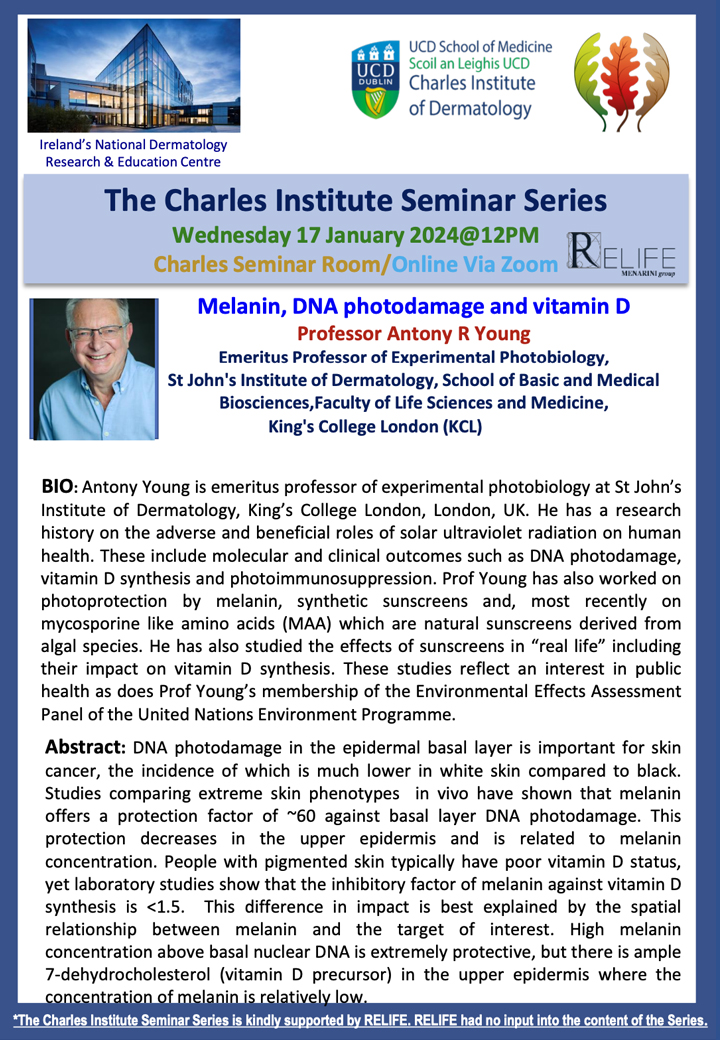Charles Institute Seminar Series 2023-24: Melanin, DNA photodamage and vitamin D with Guest Speaker Professor Antony R Young
Date of Talk: Wednesday 17 January 2024 @ 12pm
Location: Charles Seminar Room / Online Via Zoom
Talk Title: Melanin, DNA photodamage and vitamin D
Speaker Details: Professor Antony R Young
Emeritus Professor of Experimental Photobiology,
St John's Institute of Dermatology, School of Basic and Medical
Biosciences,Faculty of Life Sciences and Medicine,
King's College London (KCL)
Short Biography: Antony Young is emeritus professor of experimental photobiology at St John’s Institute of Dermatology, King’s College London, London, UK. He has a research history on the adverse and beneficial roles of solar ultraviolet radiation on human health. These include molecular and clinical outcomes such as DNA photodamage, vitamin D synthesis and photoimmunosuppression. Prof Young has also worked on photoprotection by melanin, synthetic sunscreens and, most recently on
mycosporine like amino acids (MAA) which are natural sunscreens derived from
algal species. He has also studied the effects of sunscreens in “real life” including
their impact on vitamin D synthesis. These studies reflect an interest in public
health as does Prof Young’s membership of the Environmental Effects Assessment
Panel of the United Nations Environment Programme.
Abstract for talk: DNA photodamage in the epidermal basal layer is important for skin
cancer, the incidence of which is much lower in white skin compared to black.
Studies comparing extreme skin phenotypes in vivo have shown that melanin
offers a protection factor of ~60 against basal layer DNA photodamage. This
protection decreases in the upper epidermis and is related to melanin
concentration. People with pigmented skin typically have poor vitamin D status,
yet laboratory studies show that the inhibitory factor of melanin against vitamin D
synthesis is <1.5. This difference in impact is best explained by the spatial
relationship between melanin and the target of interest. High melanin
concentration above basal nuclear DNA is extremely protective, but there is ample
7-dehydrocholesterol (vitamin D precursor) in the upper epidermis where the
concentration of melanin is relatively low.
